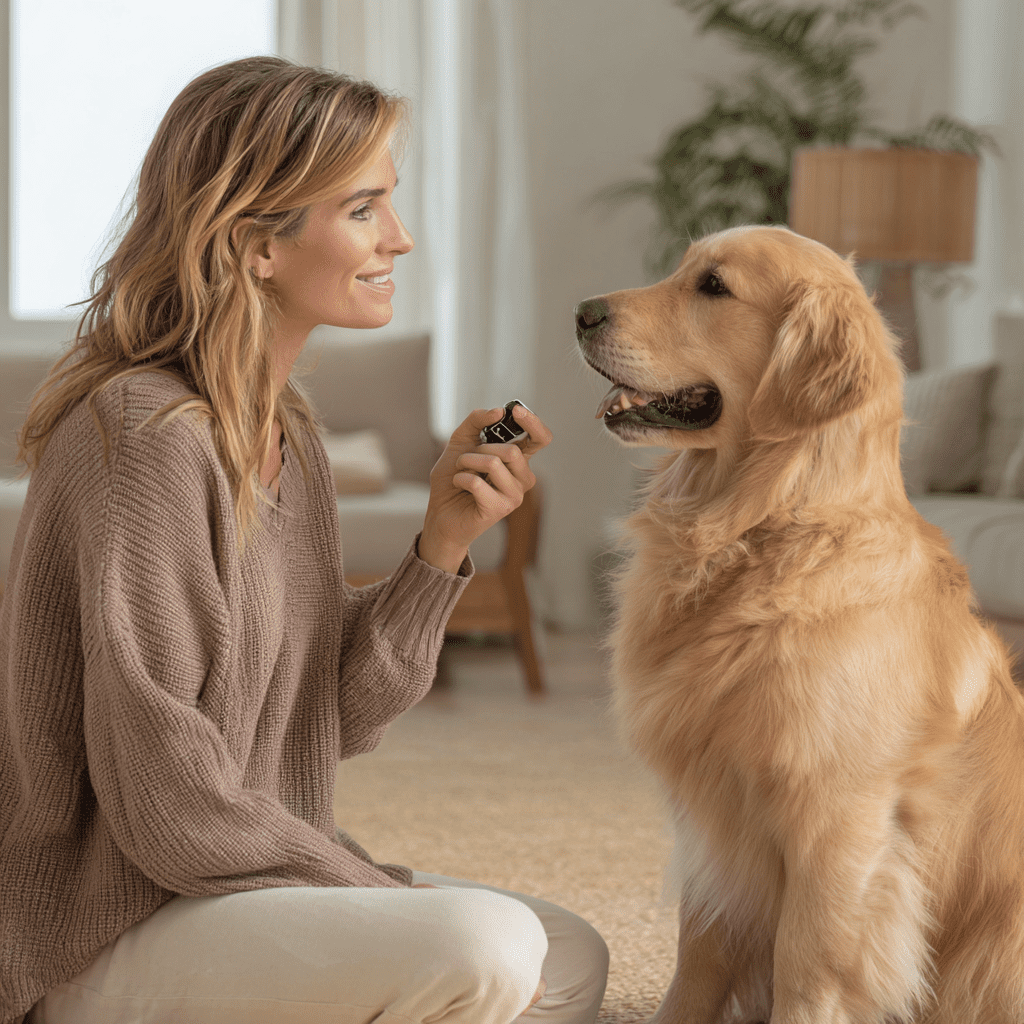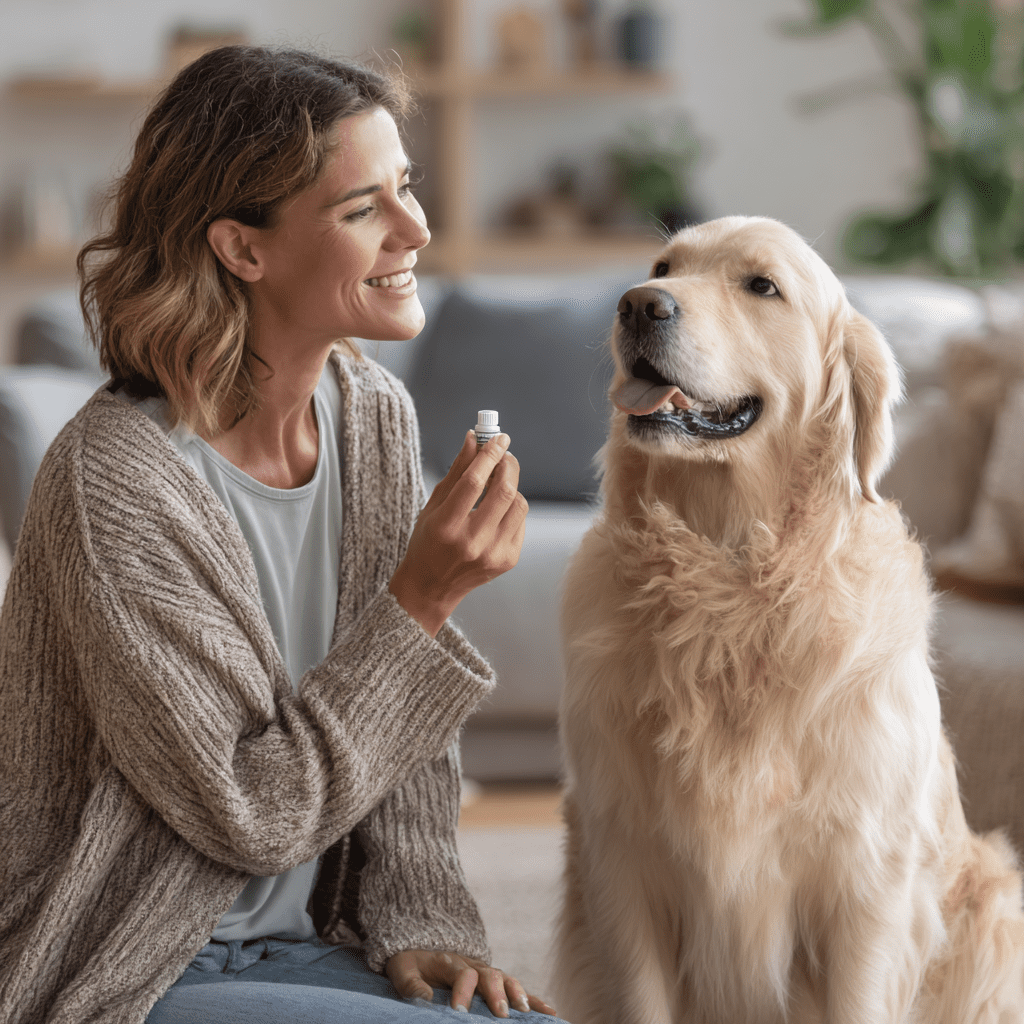Introduction
Training a dog doesn’t have to be frustrating or harsh. In fact, the most effective training methods are gentle, rewarding, and fun—for both the dog and the owner. One technique that stands out is clicker training, a science-based approach rooted in positive reinforcement. With a simple tool—the clicker—you can communicate clearly with your dog, speed up learning, and build a strong bond based on trust and cooperation.
This guide will walk you through everything you need to know about clicker training: what it is, why it works, and how to use it effectively in your daily routine.
What Is Clicker Training?
Clicker training is a form of operant conditioning that uses a small handheld device (the “clicker”) to mark desired behaviors. When your dog performs a correct action, you press the clicker, producing a distinct “click” sound, followed immediately by a reward (usually a treat).
The click acts as a marker signal—a precise way of saying, “Yes, that’s exactly what I wanted!” Over time, your dog learns to associate the click with positive reinforcement, making training clearer and faster.
Why Choose Clicker Training?
1. Clear Communication
Dogs don’t always understand what we want. Timing matters—a “click” gives instant feedback, telling your dog exactly which action earned the reward.
2. Builds Trust
Unlike punishment-based training, clicker training is gentle. It encourages dogs through encouragement and reward, strengthening the bond between pet and owner.
3. Faster Learning
Studies show that dogs trained with clickers often learn commands faster because the marker sound is precise and consistent.
4. Versatility
Clicker training can be used for:
- Basic obedience (sit, stay, come)
- Advanced tricks (roll over, fetch slippers)
- Behavior shaping (calm greetings, reducing barking)
- Agility and performance training
Getting Started with Clicker Training

Step 1: Choose the Right Clicker
Clickers are inexpensive and come in various designs. Pick one that feels comfortable in your hand and produces a sound your dog responds to.
Step 2: Charge the Clicker
Before using it for training, you need to build the association:
- Click the device.
- Immediately give your dog a treat.
- Repeat 10–15 times.
This teaches your dog that click = treat. Soon, the click itself becomes rewarding.
Step 3: Start with Simple Behaviors
Begin with easy commands like sit or touch (nose to hand). As soon as your dog performs the action—even accidentally—click and treat. Consistency is key.
Step 4: Add Verbal Cues
Once your dog reliably performs the behavior, introduce a cue word (“sit,” “down,” etc.). Say the cue, wait for the behavior, then click and reward.
Step 5: Phase Out the Treats (Gradually)
Over time, reduce the frequency of treats while keeping verbal praise and affection. Eventually, your dog will respond to cues even without food rewards.
Tips for Success
- Keep sessions short: 5–10 minutes is ideal to avoid boredom.
- Be consistent: Always follow a click with a reward.
- Reward small steps: Break down complex behaviors into manageable parts.
- Stay patient: Every dog learns at their own pace.
- Avoid misuse: Don’t click to get attention—the sound should only mark correct behaviors.
Common Mistakes in Clicker Training
- Clicking too late: Timing is everything. If you click after the behavior, your dog may get confused.
- Not rewarding every click: Skipping treats weakens the association.
- Overusing the clicker: Use it only during training, not as a toy.
- Expecting instant results: Some behaviors take time—celebrate small progress.
Real-Life Examples of Clicker Training
- Teaching “Sit”: When your dog naturally sits, click and treat. Repeat until they understand.
- Curbing Jumping: Click when your dog keeps all four paws on the ground during greetings.
- Loose-Leash Walking: Click and reward each time your dog walks calmly beside you.
- Fun Tricks: Teach spins, high-fives, or even putting toys away!
Benefits Beyond Training
Clicker training isn’t just about obedience—it improves your overall relationship with your pet. Dogs become more confident, eager to learn, and attentive. Many owners report that clicker training turns training sessions into bonding time filled with fun and excitement.
Frequently Asked Questions
Q: Do I always have to use treats?
In the beginning, yes. But once your dog understands, you can mix in praise, petting, or play as rewards.
Q: Is clicker training only for puppies?
Not at all! Dogs of all ages, including seniors, can benefit from clicker training.
Q: What if my dog is scared of the clicker sound?
Try a quieter clicker or use a ballpoint pen click as an alternative.
Conclusion
Clicker training is one of the gentlest, most effective ways to train your dog. It uses positive reinforcement, builds trust, and makes learning fun. By marking and rewarding the right behaviors, you’ll not only teach your dog commands and tricks but also nurture a relationship built on love and respect.
If you’re looking for a training method that strengthens your bond while creating a well-behaved dog, clicker training is the way to go.
